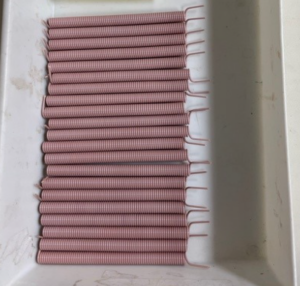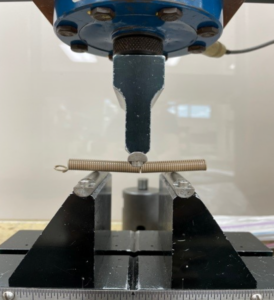Insights
Exploring Insulating Varnish for PEEK Wire High Bond
As the world continues to move towards electrification to support sustainable and green energy efforts, the performance requirements placed upon the electrical machines powering this revolution are rapidly increasing and becoming ever more demanding. At the heart of any electrical machine lies a magnet wire; one of the most critical, if not the most critical, components in determining an electric motor’s ultimate power and efficiency. Simply put, better magnet wire equals better motor performance.
Historically, enameled magnet wire has been the choice for most electric motor designs. While common, enameled wire options are not without limitations, and in many cases, the fast switching, high voltage motors of today (and tomorrow) demand a level of performance that exceeds the ability of traditional magnet wire. One of the primary shortcomings of enamel is its inability to be applied to a wire with enough thickness to provide sufficient electrical insulation for a high-voltage motor. Additionally, enameled wire can be prone to having pinholes, and it is also prone to chipping, flaking, or cracking during the rigorous forming processes often required for higher voltage motor winding.
To overcome the limitations of traditional magnet wire and take electric motors to the next level, Zeus developed a cutting-edge solution: PEEK wire high bond (HB). PEEK Wire HB enables motor designers to optimize insulation thickness and improve PDIV performance. The patented technology enables superior bonding and adhesion of the PEEK coating to the underlying copper conductor, resulting in a wire that can be wound tortuously with a reduced risk of delamination. As an extruded coating, PEEK has essentially no limitations on thickness, and due to its excellent abrasion resistance, PEEK is less prone to flaking, chipping, or cracking than enamel. The PEEK coating is extruded in a single layer with no additives, fillers, or primers, so it is a 100% PEEK solution and guaranteed to be pinhole-free in coating thicknesses above .002″. These characteristics make PEEK wire HB an ideal choice for high-voltage motor winding applications.
Since PEEK is a relatively new material in the world of magnet wire, we often get asked, “What varnish should I use with PEEK wire HB?” While there are too many varnishes and blends to test individually, we did trial PEEK wire HB with four common varnish chemistries to test their bondability to the PEEK coating: Silicone, Epoxy, Polyesterimide, and Polyester.
We tested the PEEK Wire HB per ASTM D2519, Bond Strength of Electrical Insulating Varnishes by the Helical Coil Test. In this test, PEEK wire HB was wound into helical coils and potted with each of the four varnishes. The varnishes were then cured, and each coil was subjected to a 3-point bend test. The force required to break the coils apart was recorded.

Figure 1. PEEK Wire HB wound into helical coils.

Figure 2. PEEK Wire HB coils on a 3-point fixture after being potted and cured. The force required to overcome the adhesion between the coils was recorded.
All testing was performed on AWG 18 wire with a 0.005″ PEEK HB coating. We found the bond strength for each of the varnish chemistries in our test to be as follows:
| Average Breaking Force (lbs.) | ||||
| Silicone | Epoxy | Polyesterimide | Polyester | |
| PEEK Wire HB Sample 1 | 9 | 21 | 1 | 3 |
| PEEK Wire HB Sample 2 | 6 | 33 | 2 | 3 |
| PEEK Wire HB Sample 3 | 9 | 18 | 2 | 3 |
| PEEK Wire HB Sample 4 | 7 | 29 | 1 | 3 |
| PEEK Wire HB Sample 5 | 5 | 24 | 1 | 3 |
| AVERAGE | 7 | 25 | 1 | 3 |
Ultimately, the varnish selected and the application method for applying the varnish (e.g., dip and bake method, trickle method, vacuum pressure impregnation, and ultra-sealed winding) should be based on the intended application of your design. This data is intended for reference only.
To learn more or request PEEK wire high bond samples, please get in touch with us today!